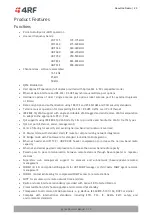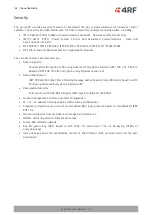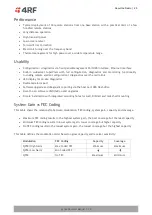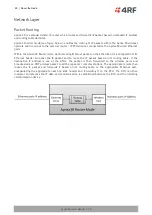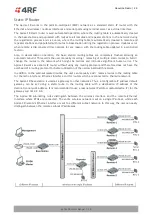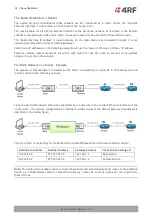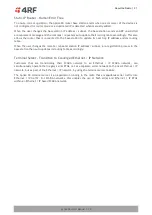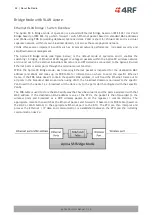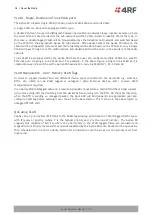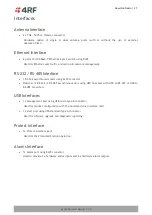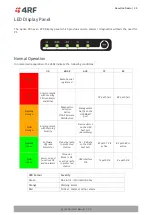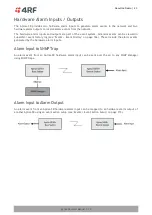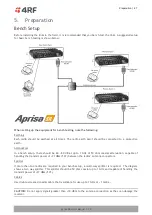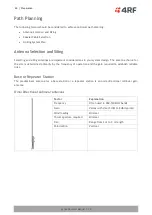
34 | About the Radio
Aprisa SRx User Manual 1.3.0
VLANs – Single, Double and Trunk VLAN ports
The Aprisa SR supports single VLAN (CVLAN), double VLAN (SVLAN) and trunk VLAN.
A single VLAN can be used to segregate traffic type.
A double VLAN can be used to distinguish between Aprisa SR sub-networks (base-repeater-remote), where
the outer SVLAN is used to identify the sub-network and the CVLAN is used to identify the traffic type. In
this case, a double tagged VLAN will be forwarded across the Industrial LAN network and switched based
on the SVLAN to the appropriate Aprisa SR sub-network. When packet enters the Aprisa SR network, the
SVLAN will be stripped off (removed) and the forwarding will be done based on the CVLAN, so only a single
VLAN will pass through over the radio network and double VLAN will be valid on the borders of the radio
network.
Trunk VLAN is also supported by the Aprisa SR where the user can configure multiple VLANs on a specific
Ethernet port, creating a trunk VLAN port. For example, in the above figure, a single trunk VLAN port is
created between the switch and the Aprisa SR base station, carrying VLAN ID #1, 20, 30 and 40.
VLAN Manipulation – Add / Remove VLAN Tags
In order to support double VLAN and different device types connected to the Aprisa SR e.g. switches,
RTUs, etc, which can be VLAN tagged or untagged / plain Ethernet devices, add / remove VLAN
manipulation is required.
In an Aprisa SR VLAN tagged network, a remote Aprisa SR connected to a plain RTU without VLAN support,
will remove (strip-off) the VLAN tag from the packet before sending it to the RTU. On the other direction,
when the RTU is sending an untagged packet, the Aprisa SR will add (append) an appropriate user pre-
configure VLAN tag before sending it over the air to the base station. This is shown in the above figure on
untagged RTU #5 and 7.
QoS using VLAN
VLANs carry 3 priority bits (PCP field) in the VLAN tag allowing prioritization of VLAN tagged traffic types
with 8 levels of priority (where 7 is the highest priority and 0 is the lowest priority). The Aprisa SR
supports QoS (Quality of Service) where the priority bits in the VLAN tagged frame are evaluated and
mapped to four priority levels and four queues supported by the Aprisa SR radio. Packets in the queues are
then scheduled out in a strict priority fashion for transmission over-the-air as per the priority level from
high to low.




